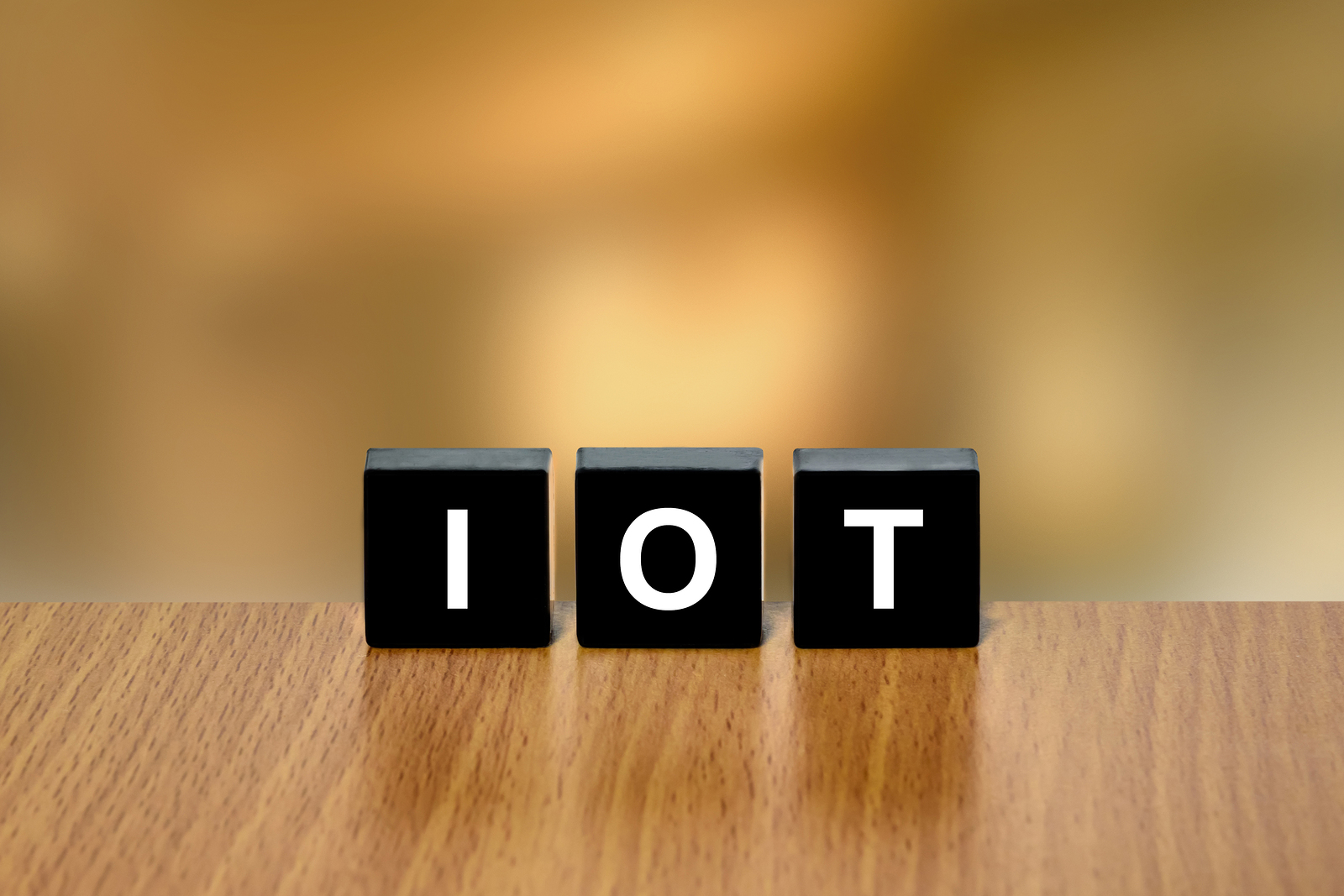Why we need a less fragmented IoT ecosystem
The Internet of Things needs common standards to live up to its promise

Most people in the technology industry are optimistic about the Internet of Things and how it's going to develop over the next few years. Connected technology such as wearables and 'smart' lightbulbs are already taking over the consumer market, while businesses are beginning to realise the benefits of this space.
The Internet of Things (IoT) is a disruptive industry and it's growing at an enormous rate. According to research from Gartner, there'll be around 21 billion everyday objects connected to the internet by 2020. IDC, meanwhile, claims that spending will research a staggering $1.29 trillion by the same year.
But despite so much positivity and potential, there are still many challenges that IoT manufacturers and regulators need to address. As well as complex security issues, there's the risk of mass fragmentation. With so many companies developing different technologies and software, there's a real need for a more integrated IoT ecosystem.
Grave security risks
Security has always been a big concern for companies, but the IoT conjures up challenges that haven't been seen before. There are worries that companies are building connected devices on poorly secured systems, which is attracting it interest of cyber criminals and as the IoT ecosystem expands, these issues are only likely to become worse.
Thibaut Rouffinea, head of devices marketing at Ubuntu, says the industry needs to work towards creating a common security standard to ensure all devices are safe as, without this, the whole IoT ecosystem could be held back. But he believes that manufacturers can do more in the short-term by issuing regular device updates.
"As the IoT expands to include over six billion devices, it represents a major opportunity for hackers and cyber-criminals looking to take advantage of a fragmented and poorly secured system," he says.
"At the heart of this issue lies a lack of standardised management, with bespoke operating systems and legacy versions of Linux being used across the IoT. Over the last 10 years, professional designers and entrepreneurs have built various independent IoT devices, all with no plans for interoperability and with no thought for long-term support.
Get the ITPro daily newsletter
Sign up today and you will receive a free copy of our Future Focus 2025 report - the leading guidance on AI, cybersecurity and other IT challenges as per 700+ senior executives
"As these entrepreneurs lose interest and their IoT start-ups fold, their devices are left without vital security updates and support, providing a perfect opportunity for hackers and botnets. As we've already seen through the recent Mirai DDOS attacks, these vulnerabilities are turning the Internet of Things into a platform for unprecedented cyber attacks. Rather than relying on isolated products and ad-hoc design rules, what IoT really needs is an operating system that can manage updates automatically."
Devices need to work together

While fragmentation in the IoT ecosystem is having an effect on manufacturers that are developing and managing connected devices, consumers are also being affected. There's a variety of companies developing different IoT devices and platforms, but it's still common for them to have difficulties working together. Art Swift, president of the Prpl Foundation, says the industry can create more open APIs and standards.
"Fragmentation is a real killer of IoT, especially from an interoperability perspective. What makes IoT useful is when it is able to connect seamlessly with other devices to provide real benefit to the user. If IoT platforms are fragmented, it defeats this purpose and makes it more difficult for users," he says.
"By using a common set of open source APIs and standards when developing IoT, the industry can benefit as whole, not only from better interoperability, but better security as well. These are core principles to the prpl Foundation, which believes once standards are set for IoT development, then companies can of course compete on other value add areas, safe in the knowledge that they have gotten the fundamentals right."
Change is happening
Although problems with interoperability persist, organisations do recognise the issue and are taking action. The Industrial Internet Consortium, Zigbee Alliance, Open Connectivity Foundation and Partnership on AI just demonstrate how people are coming together to see change happen.
Marco Hogewoning, external relations officer at internet registry organisation RIPE NCC, says it's promising to see such efforts to fight against fragmentation in the IoT industry. But for them to be successful, he'd like to see more manufacturers showing an interest in this cause.
"The IoT is undergoing phenomenal growth, but its rapid development and decentralised nature 'at the edge' of the internet has led to various security and interoperability issues. While the architecture of the internet encourages cooperation between network operators who engage on standards and peering arrangements, no similar structural factors encourage cooperation between IoT developers who are often in direct competition with one another," he says.
"Efforts are underway in a number of venues to establish standards that would allow for interoperability and increase security. However, manufacturers and technology companies from across the board will need to participate within these forums if this effort is going to be successful.
"One draw card is that these new IoT companies will be able to benefit from the vast body of knowledge that is available from the "traditional" Internet and telecommunications sector on secure networks and systems design. Sharing knowledge in these forums can prevent companies from repeating the same mistakes and will greatly improve the security of IoT devices," Hogewoning adds.
Pay attention to data
If there's one thing that everyone agrees within the IoT industry, it's that connected devices generate a massive amount of data. Just to demonstrate, tech giant IBM claims that we create 2.5 quintillion bytes of data every day. Ian Hughes, an IoT analyst at 451 Research, poses the argument that fragmentation isn't a bad thing as data streams are used in all sorts of industries and a universal IoT will never exist.
"IoT itself is a silo buster in that it can unify disparate streams of data across sources that have previously not worked together, such as a connected street lamp acting as a pollution sensor. In order for that to be possible IoT has to itself be fragmented to reach into industry specific areas," he tells IT Pro.
"With so many differing use cases, from controlling a power plant to reordering dog food, IoT can't be a one size fits all. In the mass of platforms and protocols there is a common technical thread, often to provide translation and adapters for multiple components, it's a common software model to wrap systems with common application programming interfaces (API) and it is replicated in the hardware of IoT. "
The Internet of Things is one of the most exciting areas of technology right now, and it's easy to predict that it'll continue to grow rapidly over the coming years. Objects and systems are constantly being connected to the internet, but without the right open standards and protocols, the industry will remain fragmented.
All image credits: Bigstock
Nicholas Fearn is a freelance technology journalist and copywriter from the Welsh valleys. His work has appeared in publications such as the FT, the Independent, the Daily Telegraph, the Next Web, T3, Android Central, Computer Weekly, and many others. He also happens to be a diehard Mariah Carey fan. You can follow Nicholas on Twitter.
-
 Should AI PCs be part of your next hardware refresh?
Should AI PCs be part of your next hardware refresh?AI PCs are fast becoming a business staple and a surefire way to future-proof your business
By Bobby Hellard
-
 Westcon-Comstor and Vectra AI launch brace of new channel initiatives
Westcon-Comstor and Vectra AI launch brace of new channel initiativesNews Westcon-Comstor and Vectra AI have announced the launch of two new channel growth initiatives focused on the managed security service provider (MSSP) space and AWS Marketplace.
By Daniel Todd